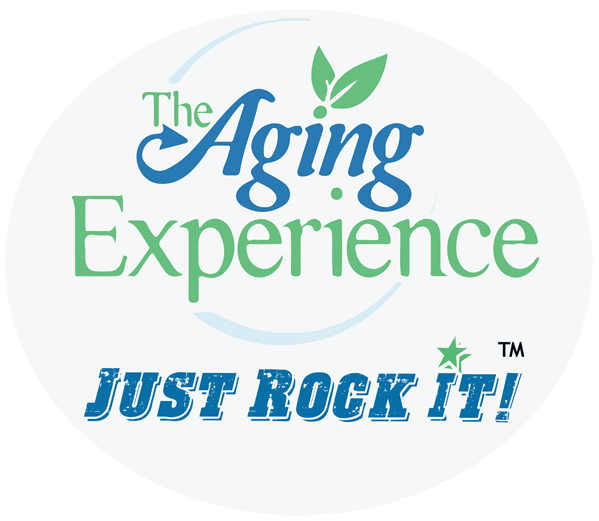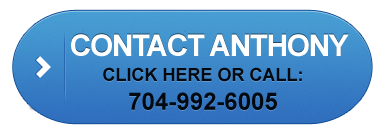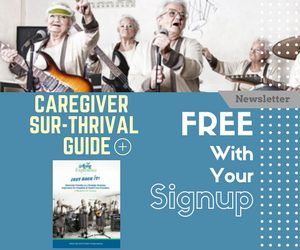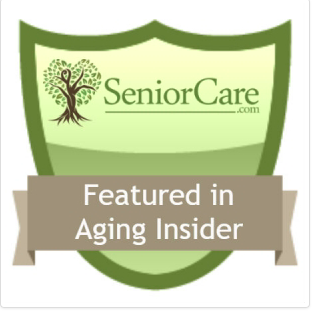9% of 60+ Live Below Poverty and Missing Out on Benefits
- There were $1.2 billion in benefits that users may be eligible to receive but are not getting.
- Seventy-one percent were missing out on benefits they are eligible to receive.
- Supplemental Nutrition Assistance Program, or SNAP
- Medicare and Medicaid, including community-based long-term supports and services, and subsidies that make Medicare affordable.
- The Low Income Home Energy Assistance Program, or LIHEAP)
- Supplemental Security Income, or SSI
- Respite care
- Tax relief
- Transportation
- Legal assistance
To use the Eldercare Locator: Call 1-800-677- 1116, Monday through Friday 9 a.m. to 8 p.m. EST or visit www.eldercare.gov
You can receive printed copies while available of the You Gave, Now Save Guide to Benefits Programs for Seniors by contacting Maria Gonzales Jackson.
Adapted from my about.com blog.
Recognizing the Important Role of Family Caregivers
Guest post by Stien Vandierendonck, Manager of Programs and Communications at the National Alliance for Caregiving. åÊ
Most American caregivers are female and on average 48 years old. They typically take care of a relative, most often a parent, for an average period of 4.6 years.1 The estimated economic value of their unpaid contribution was on average $450 billion in 2009.2
References
- National Alliance for Caregiving. Caregiving in the U.S., 2009.
- AARP Public Policy Institute Report: Valuing the Invaluable: 2011 Update, The Growing Contributions and Costs of Family Caregiving.
- National Alliance for Caregiving. Evercareå¨ NAC Caregiver Cost Study, 2007.
- National Alliance for Caregiving. The MetLife Study of Working Caregivers and Employer Health Care Costs, 2010.
- National Alliance for Caregiving. AlzheimerÛªs CaregiverÛªs Healthcare Costs Increase as Person with Dementia Declines, 2011.
- Schmall, VL, Family Caregiver Education and Training: enhancing self-efficacy, Journal of Case Management, 1995 Winter, 4 (4): 156-62.
- Family Caregiving 101. Respite.
Supplied by Amedisys.
DonÛªt Wait to Enroll in Medicare
In 2011, a record 2.8 million Americans turned 65 and became eligible for Medicare. If youÛªre a newcomer to Medicare this year there is one piece of advice I recommend you take to heart: donÛªt wait until the last minute to start planning your Medicare enrollment.
åÊ
Relax. YouÛªre not locked into the same Medicare plan forever. You can change your Medicare Advantage coverage and prescription drug coverage once a year, and some Medicare supplement plans allow you to enroll at any time. If you take your time before your 65th birthday, the decision-making process should be easier.
åÊ
Learn the basics. Trying to understand Medicare can make anyoneÛªs head spin. Medicare is a different type of health insurance plan than you may be used to, so before you get inundated with sales pitches and unsolicited advice, try to understand the basics.
åÊ
There are three basic ways to cover yourself: Original Medicare (Part A and Part B), with a Part D prescription drug plan; Medicare Advantage Plan, which can include vision, dental and prescription drug coverage; and a Medicare Supplement plan which fills certain gaps in Original Medicare.
åÊ
Figure out what you can afford. It sounds simple, but if you havenÛªt estimated what your retirement income will be, start doing that math before you enroll in Medicare.
åÊ
Calculate your income after Social Security benefits, pensions, IRA and 401(k) savings, etc. Then, create a list of monthly expenses including rent, utilities and food, as well as other things like your prescription drug costs. Subtract your expenses from your income to develop a good sense of what you can afford to spend on Medicare on a monthly basis.
åÊ
Next, look at your savings and think about what kind of a Medicare deductible you can afford if you have a large medical expense.åÊ Once you know what you can afford to pay each month for premiums and prescription drugs, as well as what type of annual deductible you could afford if you have an unexpected illness or injury, youÛªre ready to start comparing plans.
åÊ
In most states there are 10 standard types of Medicare Supplement plans. For the purposes of this article, IÛªm using the N supplement plans as an example.
åÊ
There are many Medicare Supplement N plans available on Plan Prescriber if you input your zip code into our tool. There may be additional supplement N plans available in the county that are not listed on the site. Plan prices donÛªt typically vary within a county, but be sure to use the zip code where you live when you research your options.
åÊ
Consider your health when making decisions. Your health status will help determine the type of Medicare coverage that best suits your needs. Talk to your doctor about the types of illnesses youÛªre at risk for later in life, based on your current health status and family history.
åÊ
Some Medicare Supplement plans donÛªt allow you to enroll later in life, and those that do may cost you more money. So, you want choose a plan that will fit your budget today, and in 15 years. And, if you take prescription drugs use a drug comparison tool, to help you pick a plan that covers your drugs at the lowest possible cost.
åÊ
Consider your travel plans. Whether you travel internationally or to different states, itÛªs important to understand the circumstances under which youÛªll be covered. There are Medicare supplement plans that provide travel emergency health care coverage when youÛªre in foreign countries. If you migrate to another state for several months each year, look for Medicare plans that will cover you outside of designated networks. However, original Medicare and most Medicare supplement plans are good in any location in the United States.
åÊ
Question brand loyalty. Some Medicare supplement and Medicare Advantage plans come from companies youÛªve heard of. If there is a brand you trust, investigate their coverage and consider it as an option. But, price is also an important factor. DonÛªt pay more for the exact same coverage, because you like the name of the insurer.
åÊ
All Medicare supplement plans are required to offer the same benefits, but the costs can vary widely. So a Medicare supplement K plan from one insurer must ÛÒ by law ÛÒ cover the same services as a Medicare supplement K plan from another insurer in your area. Again, using a good online comparison tool helps you compare plans and prices side-by-side so you can make an informed decision.
åÊ
Ask for help. Medicare is complex, but there are a number of resources available online, by phone and in person. In addition to online sites like PlanPrescriber, you can contact your State Health Insurance Assistance Program (SHIP) for assistance. SHIPs receive federal funding to provide free local health insurance counseling to people with Medicare. Also, the federal government has created 1-800-MEDICARE to provide information about Medicare coverage and costs, as well as health plan options.
åÊ
Giving yourself the time to research and consider your Medicare coverage options can pay off.
The Centers for Medicare and Medicaid Services (CMS) has neither reviewed nor endorsed the information provided by PlanPrescriber.
5 Things to Do to Hold Your Physician Accountable
 |
| Truth or Consequences @Ron Levine, Getty Images |
- Two-thirds of doctors responding to a survey agreed that they should disclose serious medical errors to patients.
åÊ - One-third did not completely agree that they should.
åÊ - Nearly two-fifths said they did not completely agree that they should disclose their financial relationships with drug and device companies to patients.
åÊ - Just over one-tenth said that, in the previous year, they had told patients something that was not true.
- Nearly 20 percent of physicians said they had not fully disclosed an error to a patient in the previous year because they feared the admission would trigger a malpractice case.
- More than 55 percent of physicians said they often or sometimes described a patientÛªs prognosis in a more positive manner than the facts might support.
- Women and under-represented minority physicians were significantly more likely to follow the CharterÛªs provisions on honest communication compared to white male doctors.
- More than a third of physicians did not completely agree that they should disclose all financial ties with drug and device companies to patients, even though such ties can influence treatment.åÊåÊ
- Consider the services of a patient advocate.
Advocates are there on your behalf and will ask the tough questions and assure your care is coordinated. My friend Trisha Torrey has developed a number of tools to help patients get the support they need, and to help advocates and those who hope to become advocates develop the additional skills they need to do so.
åÊ - Visit Physician Compare to find baseline information about your physician.
- If your physician is prescribing a certain medication or suggesting a certain procedure, ask him/her to disclose relationships with drug or device companies.
- For family caregivers, consider the services of a geriatric care manager that can coordinate care for you if your loved one is a far distance away.
åÊ - Know what the most prevalent medical errors / causes are. They include: åÊ
- Medication Errors
- Bad Communication
Click for the ten questions every patient should ask their doctor.åÊ
- Infection
Hospitals are one of the most likely places to receive an infection. This article reports on the incidence of high IV infection rates.
åÊ - Falls
Ten percent of falls for the elderly occur in hospitals. Patients who have other mobility issues like a broken leg, walker, or cane, can also find the clean hospital floors more slippery than those at home.
åÊ - Surgical Errors
Wrong site, wrong procedure, and even wrong patient surgeries are some medical errors. Speak to your surgeon about the procedure you are having, why you are having it, and what the surgeon will be doing during the surgery.
åÊ - Pharmacy Errors
Pharmacies can also make errors on your medication. In fact, according to this article from CNN, 30 million Americans are the victim of outpatient medication errors each year.
- Lab Errors
Types of common errors can include MRI or CT taken incorrectly, samples taken incorrectly, or results misinterpreted. If you feel your lab results are misleading, you are within your rights to ask for another lab test to confirm.
åÊ - Treatment Errors
Be sure to ask why you are having the treatment, how long the doctor has been doing them, and if there are any alternatives. This website is full of guidelines for treating many common illnesses.
åÊ - Follow Up Care
When discharged from the hospital or clinic, be sure and know what your follow up care is and what to expect from it.
åÊ - Birth Injuries
It may be the most joyous time in your life, but birthing a child can also lead to medical errors. The most common can result in serious injuries such as cerebral palsy and paralysis. Check several hospitals in and outside of your area. See the incidence of birth injury and, if possible, read reviews by other mothers who gave birth there.










